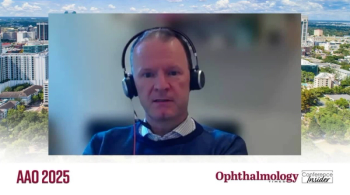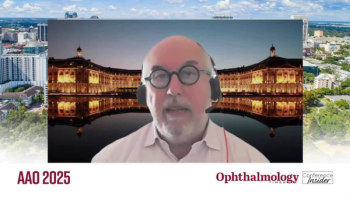
Refractive multifocal IOL improves uncorrected vision
Bilaterial implantation of a refractive multifocal IOL (ReZoom, Advanced Medical Optics) can result in high satisfaction rates among patients undergoing cataract surgery or refractive lens exchange when proper patient selection, aggressive correction of residual refractive error, and early intervention for posterior capsule opacification are part of the strategy, according to a retrospective study of 71 patients.
Key Points
Wilkes-Barre, PA-Bilateral implantation of a refractive multifocal IOL (ReZoom, Advanced Medical Optics) can result in high satisfaction rates among patients undergoing either cataract surgery or refractive lens exchange (RLE) when proper patient selection, aggressive correction of residual refractive error, and early intervention for posterior capsule opacification (PCO) are part of the strategy, according to Frank A. Bucci Jr., MD, founder and director, Bucci Cataract and Laser Vision Institute, Wilkes-Barre, PA.
Outcomes were evaluated after a minimum of 11 weeks so that patients had time to adapt to the new visual system. Mean follow-up was 43 weeks. Distance uncorrected visual acuity (UCVA) results were excellent, said Dr. Bucci, and an effective combination of functional uncorrected near and intermediate vision was achieved in a high percentage of patients. Simultaneous uncorrected J1 near vision and J2 or better intermediate vision was achieved in 80% of patients who underwent refractive lensectomy and in 75% patients who underwent cataract surgery. In addition, the patients were almost unanimously satisfied. Overall, 94.4% of patients said they would undergo the same surgery again, 84% reported complete spectacle independence at all distances, and no patient inquired about explantation.
"However, it is important to understand a patient's vision needs and expectations preoperatively so they can be managed appropriately," he continued. "When patients are well-informed about what to anticipate after surgery, the chances for achieving satisfaction and avoiding disappointment are improved."
To avoid patient dissatisfaction because of dysphotopsias or near vision function, patients were excluded from the bilateral refractive multifocal IOL procedure if they had a mesopic pupil size <4.0 mm or an intense need for fine, detailed, near vision postoperatively.
The patient population had more than twice as many women as men (69% versus 31%), and a slight majority underwent cataract surgery (55%) compared with RLE (45%). Mean age was 52 years for the patients undergoing RLE and 61 years for the patients undergoing cataract surgery, but the entire population had a wide age range, from 27 to 87 years.
Surgery was performed on the dominant eye first, aiming for a refraction of plano to –0.12 D. At 2 to 3 weeks after surgery, outcomes were evaluated with special attention to near vision. If patients were satisfied with their reading ability, a refraction of plano to –0.12 D was targeted in the nondominant eye, whereas a more myopic outcome (–0.50 D) was targeted in patients who felt they needed stronger near vision.
Preoperatively, the eyes had a mean spherical equivalent (SE) of –1.02 D (–15.87 to +6.62 D) and mean refractive cylinder of 0.91 D. Mean UCVA was 20/285 (20/20 to 20/4000), and mean best-corrected visual acuity was 20/27 (20/15 to 20/400).
Almost half of the eyes underwent Nd:YAG laser capsulotomy for PCO (45%), and one-third had a second procedure for residual refractive error. The majority of these refractive procedures were incisional surgeries (23 microRK/AK), but some patients underwent an excimer laser procedure (12 LASIK, two PRK). After those procedures, mean SE was –0.22 D, and mean refractive astigmatism was 0.37 D, respectively.
"Aggressively treating residual refractive error to maximize visual acuity is essential with these very demanding patients. Astigmatism or spherical error greater than 0.50 D should be treated," Dr. Bucci said. "In addition, PCO should be treated relatively early because the optics of multifocal IOLs already cause reduced contrast sensitivity."
At the last follow-up, mean distance UCVA was 20/24. Mean near vision, evaluated at the patient's best focal point, was J1.79 in unilateral testing and J1.32 in binocular testing.
Intermediate vision was tested at arm's length and averaged J2.79 in unilateral testing and J1.88 in binocular testing. Mean outcomes at all distances were slightly better in the patients who underwent RLE than in the patients who had undergone cataract surgery.
Newsletter
Don’t miss out—get Ophthalmology Times updates on the latest clinical advancements and expert interviews, straight to your inbox.






















































.png)


